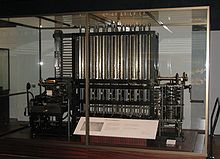History

Computer engineering began in 1939 when John Vincent Atanasoff and Clifford Berry began developing the world's first electronic digital computer through physics, mathematics, and electrical engineering. John Vincent Atanasoff was once a physics and mathematics teacher for Iowa State University and Clifford Berry a former graduate under electrical engineering and physics. Together, they created the Atanasoff-Berry computer, also known as the ABC which took 5 years to complete. While the original ABC was dismantled and discarded in the 1940s a tribute was made to the late inventors, a replica of the ABC was made in 1997 where it took a team of researchers and engineers four years and $350,000 to build.
The modern personal computer emerged in the 1970s, after several breakthroughs in semiconductor technology. These include the first working transistor by William Shockley, John Bardeen and Walter Brattain at Bell Labs in 1947, the silicon surface passivation process (via thermal oxidation) by Mohamed Atalla at Bell Labs in 1957, the monolithic integrated circuit chip by Robert Noyce at Fairchild Semiconductor in 1959, the metal-oxide-semiconductor field-effect transistor (MOSFET, or MOS transistor) by Mohamed Atalla and Dawon Kahng at Bell Labs in 1959, and the single-chip microprocessor (Intel 4004) by Federico Faggin, Marcian Hoff, Masatoshi Shima and Stanley Mazor at Intel in 1971.
History of computer engineering educationedit
The first computer engineering degree program in the United States was established in 1971 at Case Western Reserve University in Cleveland, Ohio. As of 2015update, there were 250 ABET-accredited computer engineering programs in the U.S. In Europe, accreditation of computer engineering schools is done by a variety of agencies part of the EQANIE network. Due to increasing job requirements for engineers who can concurrently design hardware, software, firmware, and manage all forms of computer systems used in industry, some tertiary institutions around the world offer a bachelor's degree generally called computer engineering. Both computer engineering and electronic engineering programs include analog and digital circuit design in their curriculum. As with most engineering disciplines, having a sound knowledge of mathematics and science is necessary for computer engineers.
Comments
Post a Comment